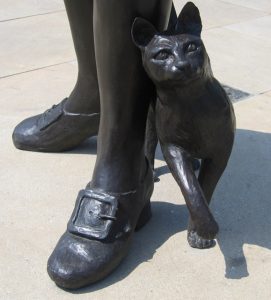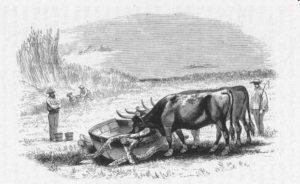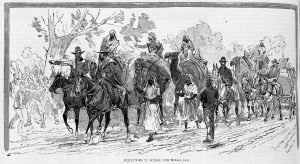13
Animals may not have been deliberate explorers but they were vital to European expeditions of exploration. Animals were present on European ships from their first entry into the Pacific, and they were essential to the overland exploration of the Australian continent. Their abilities facilitated expeditions, their needs (and the disruptions caused by their behaviour) were consuming concerns for many expedition leaders, and the independent advance of feral species into new regions offers a chance to reflect on what exploration actually is.

Animals were a familiar presence on the European vessels that came to the Pacific. They were so familiar that they were rarely recorded within voyage accounts, and they are absent from most modern histories of exploration, and from reconstructed vessels (displaced by a need to find room for modern sanitation and safety requirements). Animals formed part of expeditions’ supplies (producing eggs, milk, and meat), they were tools (cats managed vermin), companions (sailors made pets of cats, dogs, parrots, and monkeys), and some animals were present independently of their human hosts (attracted by the prospect of food). Yet, despite their presence they only occasionally appear in journals, generally when they startled indigenous people, when their requirements affected the operation of the ships, or when they suffered accidental death.
Animals were an important part of a functioning ship and supplies of desirable animals were replenished wherever and whenever possible. Pacific explorers stocked up on animals at ports passed on the way to the Pacific: the Cape Colony, and Batavia. Ships traded for animals within the Pacific: Tahiti was particularly valued for its supplies of pigs, while its chickens did not adapt well to shipboard life. And animals were captured when possible: James Cook’s crew captured turtles during their time at the Endeavour River, an act which caused conflict with the local people for whom the turtles were an important source of food and which they reasonably considered to be under their control.
European ships in the Pacific deposited animals, as well as collecting them. Various expeditions left living animals on islands in hope of enriching the lives of local people, while also establishing a supply for later European visitors. Tahiti was an early beneficiary, receiving a turkey and a goose from the Dolphin; cattle, pigs, dogs, goats from Domingo Bernardo de Bonechea Andonaegui’s 1772-3 expedition; and spaniels, goats, pigs, a goose, sheep, peacocks, turkeys, ducks, cows and a bull, horses, rabbits, cats, poultry, a monkey, and goats from Cook during his various sojourns there. On his voyage aboard the Resolution Cook also gifted Tahiti European rats, putting down a gangplank in an attempt to encourage them to leave his ship. In Aotearoa (New Zealand) some types of feral pigs are still referred to as Captain Cookers, and may well be descended from the pigs introduced by Cook, or by the French explorer Jean-François de Surville.

Overland expeditions set off with animals as motive power and walking supplies. Exploring the Australian continent while attempting to live off the land tended to be unsuccessful, and driving animals with them allowed explorers to move more quickly than if they attempted to hunt along the way. Some overland expeditions had the delivery of stock to European outposts as their primary concern and conducted exploration as an afterthought. Different explorers used different types of animals, and all had their strengths and weaknesses: horses could move quickly, but required good feed; cattle were more robust, but slower; sheep were manageable but provided only food and not motive power; and camels were robust, strong, and fast but less readily available and less familiar to most European explorers. And all these species of animals had a tendency to stray, and dictated the resources that explorers needed to provide to them. Finding sufficient water to maintain their animal companions in good health was a particular challenge for Australia’s European explorers.

Three expeditions in northern Australia provide examples of the significance of animal explorers. In 1844 Ludwig Leichhardt set off from the Darling Downs to find a route to Port Essington on the north coast of the continent. He intended to travel light and live off the land, but quickly found that he had underestimated his need for animals. On 3 November 1844 Leichhardt sent two human members of his expedition back to civilisation as his initial party of 16 cattle, 17 horses, and 10 men had too high a proportion of men. In 1845, Thomas Mitchell’s well-planned and extensive expedition within tropical Australia set off with 80 bullocks, 13 horses, 250 sheep, and 29 men. As had been the case with Leichhardt, the party’s progress depended on how long the men needed to spend searching for straying animals, what resources they needed to locate, and how much rest the animals required. The 1864 expedition led by Frank and Alexander Jardine is notorious for the violence it directed at the local populations of the regions it traversed. It is also notable for its commitment to cattle: the expedition was sent to supply the settlement of Somerset on Cape York with a permanent beef supply. The records it produced of country previously only known by its traditional owners was a by-product of its intent to move cattle. The expedition set off with about 250 head of cattle, 41 horses, one mule, and 10 men.
In Australia, animals quickly escaped the control of European settlers. The Cowpastures region near Sydney is named for cattle that escaped from the settlement, multiplied, and were rediscovered by European settlers in 1795. That herd of cattle escaped from the control of its European handlers and ‘explored’ a previously unknown region of New South Wales. The animals that accompanied explorers, or that lived outside the officially colonised regions of Australia, altered the landscape making their roles as colonisers and settlers in their own right murky. Animals could also act as living markers of the human settler colonial project, allowing explorers to judge the edges of ‘civilisation’ through signs of their presence. In colonial Australia, European civilisation was marked out with animal dung.
European exploration of Australia and the Pacific occurred at a time when animals were present in human lives as tools and essential supplies. On both ship and shore they served essential services as well as providing spiritual sustenance as companions and sources of cultural reassurance. Early European exploration of the continent would have been impossible without animal horsepower. Some animals were present against human wishes, and some animals absconded from human settlement projects, acclimatising themselves in new habitats without direct human support. Non-human animals played varied and vital roles in exploration, but have generally been ignored.
Links
Explorer Journals
Jardine, F., A. Jardine. Narrative of the Overland Expedition of the Messrs. Jardine, from Rockhampton to Cape York, Northern Queensland, Compiled from the Journals of the Brothers. Edited by Frederick J. Byerley. Brisbane: J. W. Buxton, 1867. https://gutenberg.net.au/ebooks/e00026.html
Leichardt, Ludwig. Journal of an Overland Expedition in Australia from Moreton Bay to Port Essington, a Distance of Upwards of 3000 miles, During the Years 1844-1845. London: T. and W. Boone, 1847. https://adc.library.usyd.edu.au/data-2/p00050.pdf
Mitchell, T. L. Journal of an Expedition in the Interior of Tropical Australia in Search of a Route from Sydney to the Gulf of Carpentaria. London: Longman, Brown, Green and Longmans, 1848. https://adc.library.usyd.edu.au/data-2/mitjour.pdf
Mitchell, T. L. Three Expeditions in the Interior of Eastern Australia With Descriptions of the Recently Explored Region of Australia Felix and of the Present Colony of New South Wales. London: T. and W. Boone, 1839. https://adc.library.usyd.edu.au/data-2/mitthre.pdf
Maps and online resources
Invasive Animals Ltd, “Feral Scan”. Accessed March 31, 2022.
Video material
Open access secondary sources
Brennan, Claire. “Livestock and Landscape: A History of the Settlement of Queensland by Cattle,” in Selected Lectures on North Queensland History from City Libraries Sir Philp Lecture, edited by Trisha Fielding. Townsville: Townsville City Council, 2009, 92-103. https://www.townsville.qld.gov.au/__data/assets/pdf_file/0015/5370/Sir-Robert-Philp-Lecture-Series-book-Nov2009.pdf
Gillingham, Allan. “Pigs and the Pork Industry – Early Farming and Feral Breeds.” Te Ara – the Encyclopedia of New Zealand. Updated November 24, 2008. http://www.TeAra.govt.nz/en/pigs-and-the-pork-industry/page-1
Makepeace, Margaret. “The Well-Travelled Goat.” Untold Lives, April 11, 2019. https://blogs.bl.uk/untoldlives/2019/04/the-well-travelled-goat.html
Tsing, Anna L., Jennifer Deger, Alder Keleman Saxena and Feifei Zhou (eds). Feral Atlas: The More-Than-Human Anthropocene. Redwood City: Stanford University Press, 2021. https://feralatlas.org/
Other secondary sources
Bourke, Donna. “What Happened to the Camels of the Burke and Wills Expedition?” Provenance 9 (2010): 53-61.
Kean, Hilda. “Challenges for Historians Writing Animal-Human History: What is Really Enough?” Anthrozoös 25, no. 1 (2012): 57-72.
Tahan, Mary R. Roald. Amundsen’s Sled Dogs: The Sledge Dogs Who Helped Discover the South Pole. Cham: Springer International Publishing, 2019.
